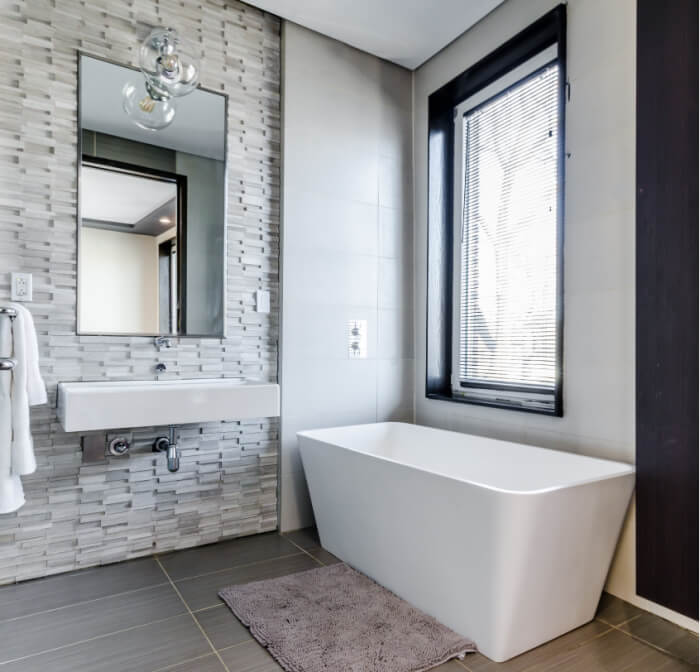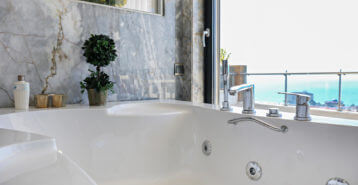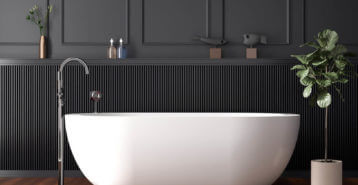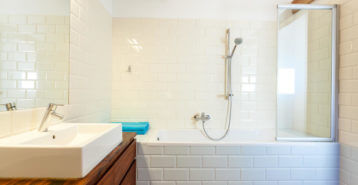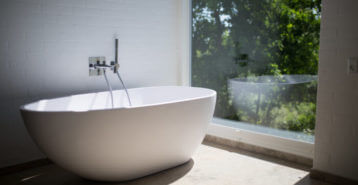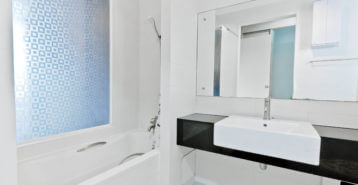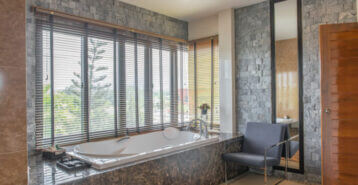What Is the Standard Bathtub Size?
Bathtubs come in a variety of shapes, sizes, and styles, making it important to choose the right one for your space. The most common types include alcove tubs and shower/tub combos, which are typically found in standard bathrooms. Larger or deeper options, such as freestanding or soaking tubs, offer more luxury but require additional space.
As a general rule, a standard bathtub size is 60 inches long, 30 inches wide, and 15 inches tall. However, dimensions vary depending on the style of tub you choose. Understanding these differences will help you select the best bathtub for your remodel.
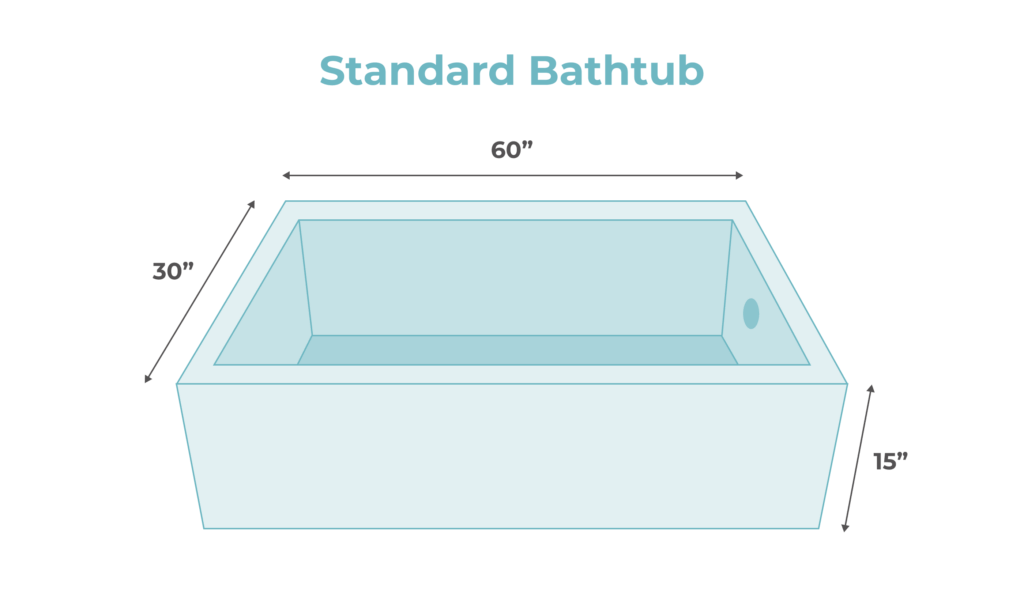
There are a handful of common tubs for home bathrooms, but the standard tub most people think of is the alcove tub. These tubs have average dimensions of 60 inches in length (or 5 feet), 30 inches in width, and 14 to 16 inches in height.
As you shop, you’ll be able to quickly compare the specs on available tubs to these standard bathtub dimensions. Most homes are set up to accommodate the rough-in plumbing requirements needed for a tub of this size. However, it’s always a good idea to set up an appointment with a local contractor to make sure your new tub size is compatible with your current bathroom set-up.
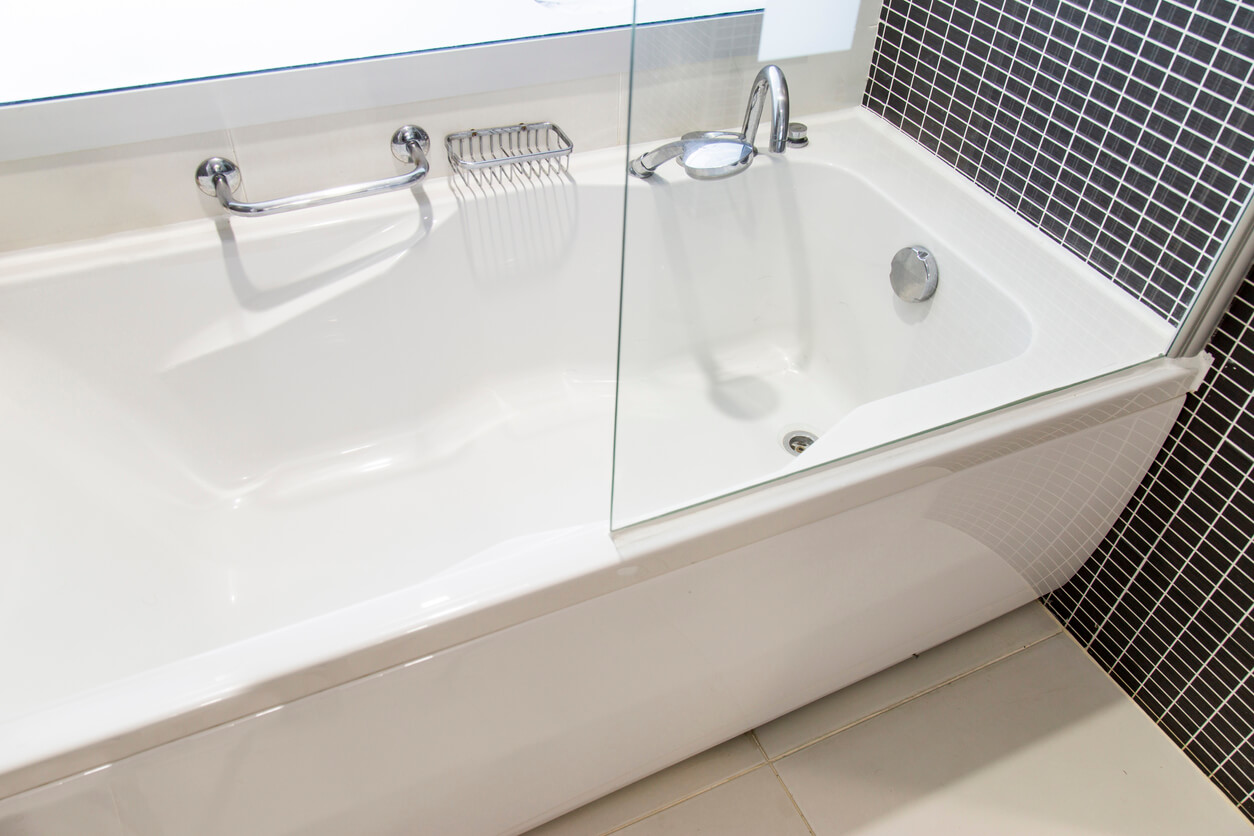
If you are looking for a bigger bathtub, soaking tubs are slightly larger than alcove tubs and are quite popular in master bathrooms with more room to spare. Soaking tubs have a standard size of 60 inches to 72 inches long, which allows for many people to sit back with their knees submerged beneath the water.
Standard Bathtub Sizes by Type
Before choosing a bathtub, it’s important to measure your space to determine what size will fit. If you need a smaller or non-standard tub, you may need a specialty model that requires special ordering.
Beyond the typical standard bathtub, there are several other styles to consider, each with its own average dimensions. Below is a quick guide to common bathtub types and their standard sizes to help you find the best fit for your bathroom.
| Tub Type | Average Length | Average Width | Average Height |
|---|---|---|---|
| Alcove tub | 60" | 30"-32" | 14"-18" |
| Soaking tub | 52"-60" | 30"-32" | 27"-34" |
| Freestanding tub | 60"-66" | 30"-40" | 24"-30" |
| Shower/tub unit | 60" | 30"-31" | 74" |
| Drop-in tub | 45"-72" | 30"-32" | 14"-20" |
| Whirlpool tub | 48"-72" | 48"-72" | 18"-20" |
Alcove Tub Dimensions
Alcove tubs are considered standard sized bathtubs that are designed to fit easily into the alcove of a bathroom. These tubs are usually enclosed on three sides by paneling or tile.
The standard bathtub size for an alcove tub is typically 60 inches long, 30 to 32 inches wide, and 14 to 18 inches deep once fully installed. Alcove tubs are usually large enough to sit in with your feet fully extended and your legs fully submerged. In order to soak the torso, most people will have to slide down and bend their knees, allowing them to poke out of the water.
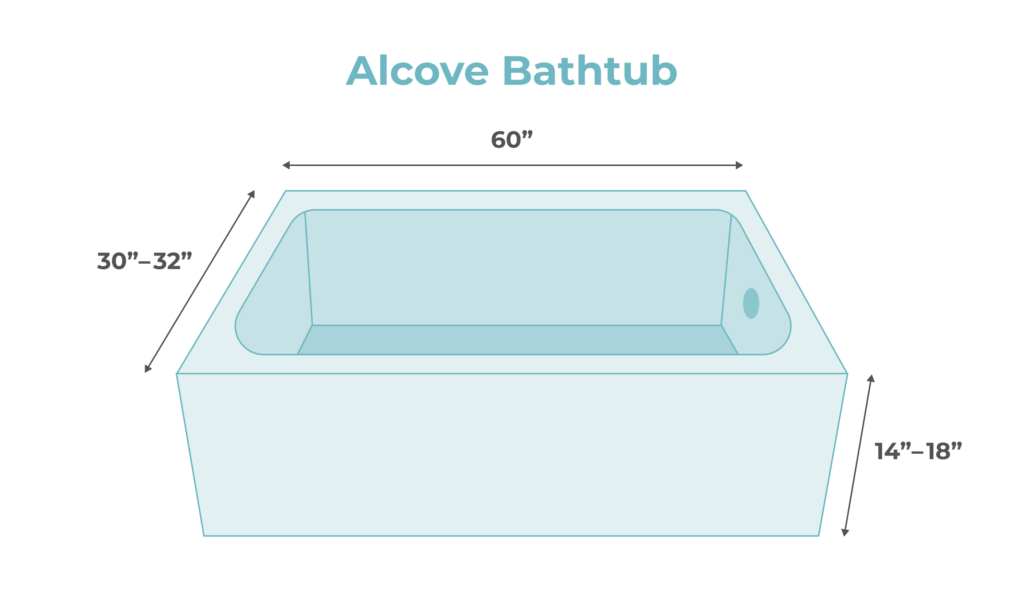
Unless you plan to renovate the existing alcove in your bathroom, your options for tub styles and sizes will be somewhat limited. Alcove tubs are designed to fit within a defined space, meaning you’ll need to choose a tub that matches those dimensions unless you’re willing to modify the layout.
Soaking Tub Dimensions
Soaking tubs are designed for a deeper soak, since they are much deeper than a standard tub. This makes it possible for taller people to submerge their bodies. The average dimensions of a soaking tub are 52 to 60 inches in length, 30 to 32 inches in width, and 27 to 34 inches in depth. Generally speaking, a soaking tub can add 13 to 16 extra inches of depth to the tub.
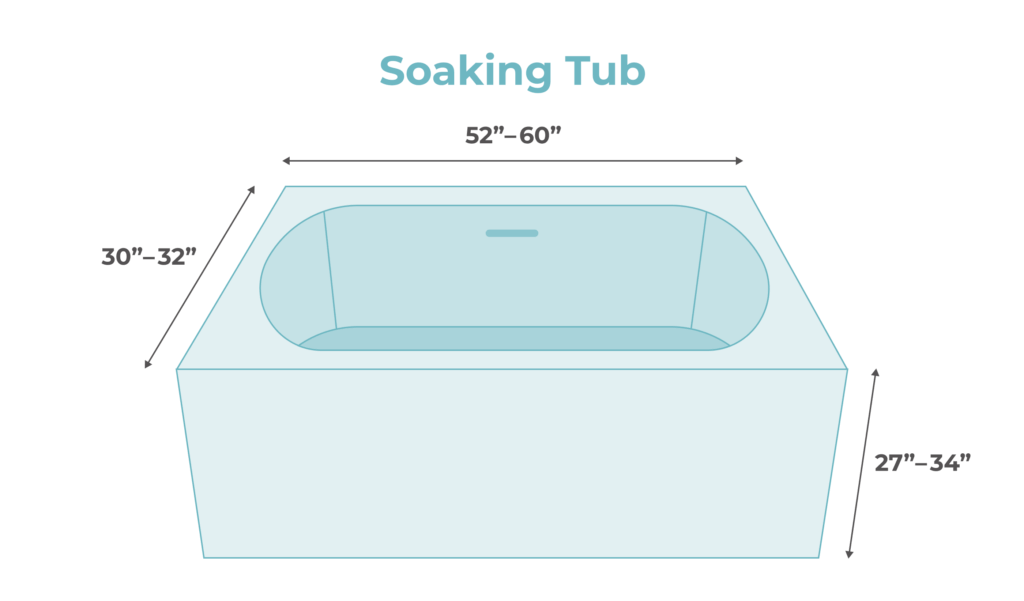
Sometimes called Japanese soaking tubs, these deep tubs are designed for full-body immersion. They typically start at 27 inches deep, allowing bathers to crouch or sit while submerging up to the neck. In Western designs, soaking tubs can be even deeper—some reaching 34 inches—and often include built-in seats for comfort.
Unlike standard alcove tubs, soaking tubs are shorter in length to accommodate upright bathing, making them ideal for small spaces or bathroom nooks. However, some models do come in the standard 60-inch length. Regardless of shape or size, the defining feature of a soaking tub is its depth, which enhances relaxation and provides a spa-like experience at home.
Freestanding Tub Dimensions
Freestanding tubs are similar in size compared to standard tubs in terms of their overall footprint. However, you can get more tub in the same amount of space – freestanding tubs are not enclosed by unnecessary paneling or drywall, which takes away from potential bathing space. The average dimensions of a freestanding tub are 60 to 66 inches in length, 30 to 40 inches in width, and 24 to 30 inches in height, making them slightly more roomy than the standard bathtub.
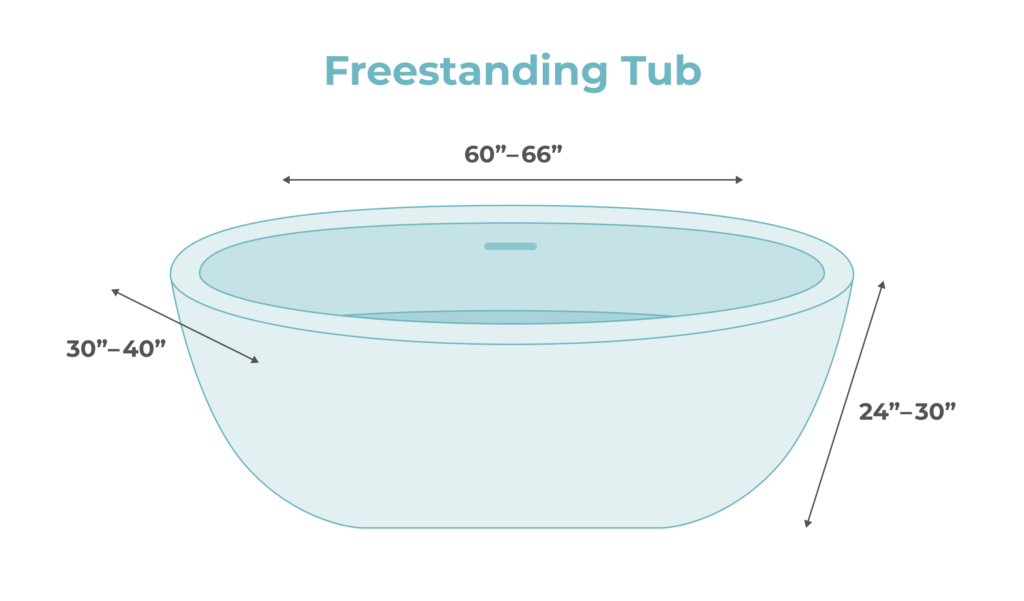
The clawfoot tub is the most classic and recognizable style of freestanding tub, featuring decorative feet—sometimes shaped like a lion’s paw. These tubs typically range in length from 54 to 72 inches, with most falling between 60 and 66 inches.
Freestanding tubs are generally 30 to 40 inches wide and stand taller than standard tubs, often measuring 24 to 30 inches in height. While this added height creates a luxurious look, it may pose a mobility challenge, especially for those with accessibility concerns, as stepping in and out of a wet tub can be risky.
Beyond clawfoot designs, freestanding tubs come in a variety of styles, sizes, and materials, allowing you to find a model that perfectly fits your space and aesthetic preferences.
Shower/Tub Combo Unit Dimensions
Shower/tub combo units are commonly found in bathrooms that are not the primary bathroom in the home. While master bathrooms might be larger, often with a dedicated tub and a separate walk-in shower, smaller bathrooms or guest bathrooms will likely opt for the space-saving and economical shower/tub combo.
The standard bathtub size for a shower/tub combo unit is 60 inches long, 30 to 31 inches wide, and 74 inches tall. You’ll notice the tub itself is about the size of a standard alcove tub for a standalone bath, but the height accounts for the floor-to-ceiling wall of the unit.
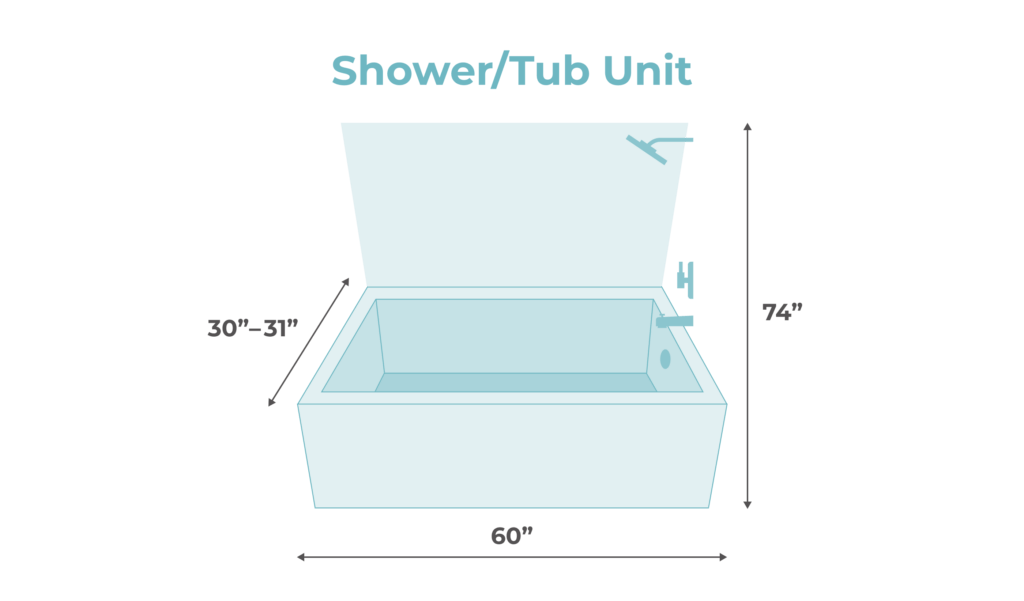
These units are typically one-piece designs that fit seamlessly into a tub alcove, providing both a bathtub and shower in a single installation. Because they are made from a single molded piece, they are easier to clean than traditional tile showers and have fewer seams, making them less prone to leaks. This design offers a low-maintenance, durable option for homeowners looking for a simple and efficient bath-and-shower combination.
Drop-in Tub Dimensions
Drop-in tubs are another larger luxury upgrade for primary bathrooms because of the design featured around the tub itself. The standard dimensions for a drop-in tub are anywhere from 45 to 72 inches long, 30 to 32 inches wide and between 14 and 20 inches deep.
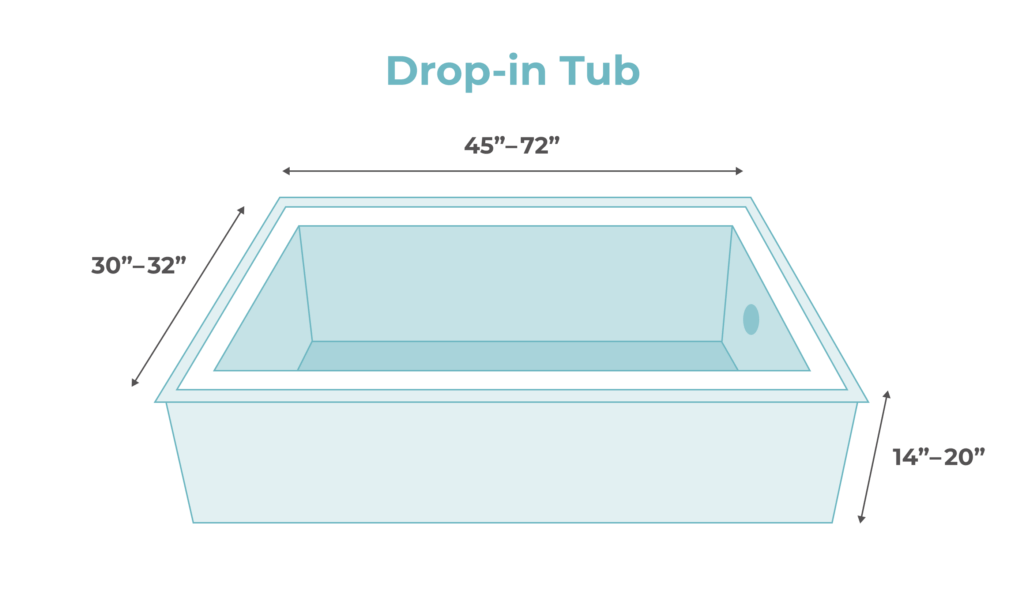
These tubs are typically placed in a box that has been tiled or otherwise built up around the tub to prevent leaks and water damage to the drywall.
Whirlpool Tub Dimensions
Whirlpool tubs are known more for their features than their size. These tubs feature jets and might also be referred to as Jacuzzi tubs, massage tubs, or jetted tubs. Whirlpool tubs might resemble a simple alcove or soaking tub, as well as a more decorated drop-in tub.
Because whirlpool tubs are a popular commodity, these tubs are available in lots of unique shapes and sizes depending on your needs. You can find models that are 48 by 48 by 18 inches for example, or you can go with a 72 by 72 by 20 inch corner tub that gives you plenty of space to relax and unwind.
Smallest Bathtub Size
The smallest bathtub size is typically 60 inches long by 30 inches wide by 14 inches deep. You can sometimes find tubs as short as 45 inches in length. If you are looking for anything smaller than that, you’ll want to make a special request to your bathroom remodeler or plumber to show you options that fit your particular space.
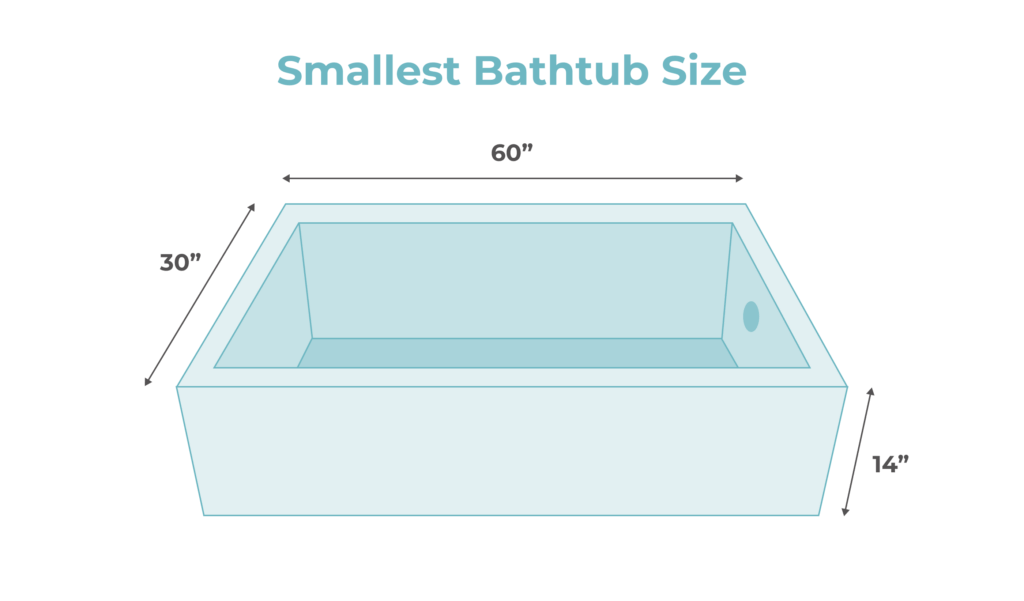
If space is tight in your bathroom, the best style of tub might be the shower/tub combo unit, which gives you the best of both worlds within the smallest footprint. You will also be able to find an alcove tub that comes in the smallest dimensions, and oftentimes soaking tubs fit very efficiently into small bathroom spaces.
Largest Bathtub Size
The largest bathtub dimensions are usually 72 inches in length, 40 inches in width and up to 34 inches in height, but this is the maximum size. You will have to coordinate with your local bathroom remodeler to find multiple options in those larger bathtub sizes or tubs that are even larger.
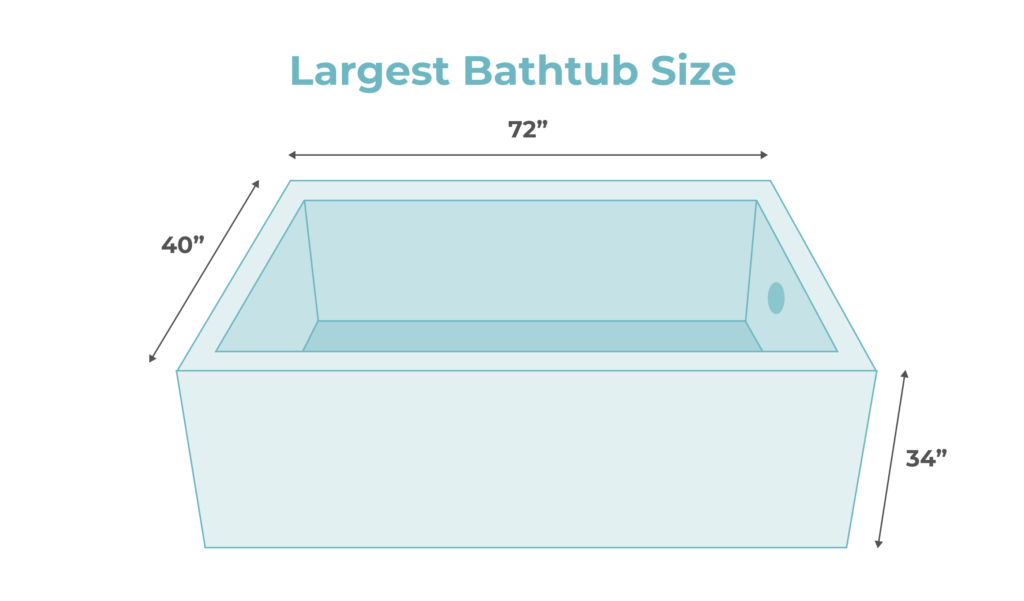
Whirlpool tubs, drop-in tubs, and soaking tubs can be found in larger sizes that fit well in master bathrooms. Alcove tubs or shower/tub combos, on the other hand, are specifically designed for that standard space in a bathroom and won’t therefore come in much larger sizes.
Deepest Bathtub Size
For the deepest soaking experience, soaking tubs offer the most depth, typically ranging from 32 to 38 inches. These tubs allow water to reach shoulder height for most bathers, creating a luxurious, immersive soak. Even a bathtub with a depth of 25 to 27 inches can provide ample water coverage for a comfortable bathing experience.
If you’re considering a deep soaking tub, consulting with a local bathroom remodeler is a great way to ensure you choose the right size and style for your space and needs.
How Bathtub Size Affects Remodel Costs
The size of your bathtub significantly impacts the overall cost of your bathroom remodel, especially if it requires custom adjustments.
Larger tubs may need additional plumbing work, modifications to walls or flooring, and more extensive labor. If you choose tile walls instead of a standard tub/shower surround, expect higher material and installation costs. In some cases, a new tub may not even fit through the bathroom doorway, requiring structural changes just to move it into place. Clearance from toilets or other fixtures could also mean relocating plumbing, further increasing costs.
Material choice is another key factor. Bathtubs come in a variety of materials, from budget-friendly acrylic to heavy, durable cast iron, each with its own price range.
To get a better idea of your remodel expenses, use our bathroom remodel cost calculator for a personalized estimate.
How to Measure the Right Bathtub Size for Your Space
Before purchasing a new bathtub, it’s important to get accurate measurements—but consulting a professional is the best way to ensure a perfect fit. A bathroom remodeler can assess your space and recommend the ideal tub size while accounting for plumbing, tiling, and design elements. In many cases, the tub you choose should be slightly smaller than the available space to allow for proper installation.
Modernize can connect you with a trusted local contractor to help you determine the right bathtub size for your home and understand the costs involved.
Compare top-rated bathroom remodel pros in your area.
Read real homeowner reviews, explore qualifications, and view promotions. Modernize makes it easy to browse professionals and find one that will be perfect for your project.
